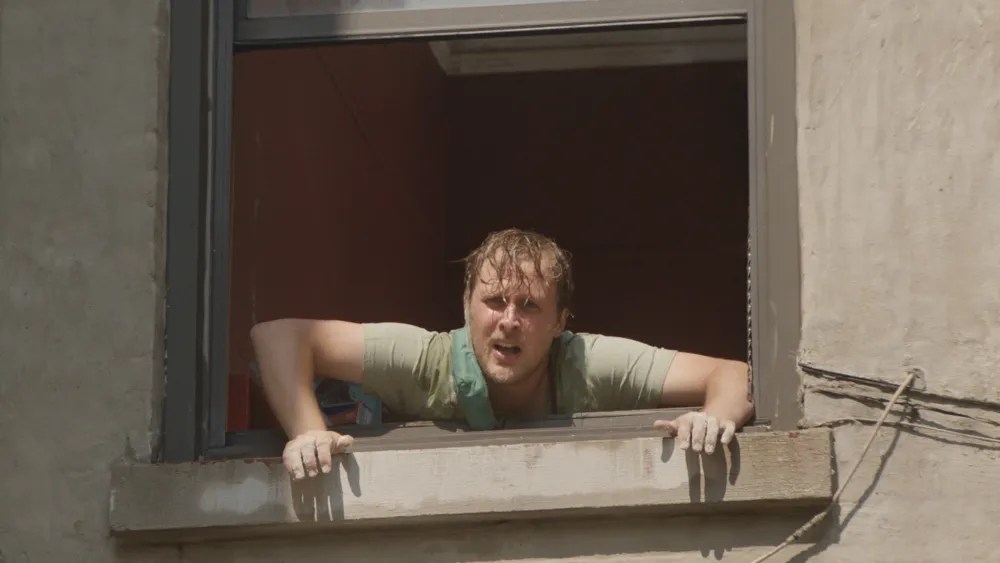The first thing you notice about Adamant is that it is perfect good – not just a mental institution, which often resembles prisons or kennels, but a building of any kind. A floating boat moored on the right bank of the Seine (where it is surrounded by a labyrinth of inaudible concrete towers), this private unit of the Paris Central Psychiatric Group stands out of place like an antique cabinet accidentally dropped on the spot. in the middle of the Ikea showroom; It’s hard to shake the feeling that someone might see a mistake and blow the whole thing out of the water at any moment.
And yet the brown oaks continue to open every morning, sounding music to the ears of local men and women whose brains are disturbed and leave them with nowhere else to go. Unlike many other day care centers like it, however, Adamant refuses to act as a last resort. With a staff of medical professionals who don’t wear clothes and art workshops, an examination room, and a restaurant run by some of its most loyal customers, Adamant is a safe place and a thriving community. Their presence may be determined, but its patients search being there, and that makes all the difference in their reputation.
Mental illness is often a double blind that can make people seem invisible to the world (and themselves as well), but Adamant – with no visible signs of psychotherapy – encourages visitors to see themselves outside despite their condition. It reminds them that mental illness is a condition they have, not something that defines who they are. The only ambition of Nicolas Philibert’s Berlinale-winning “On the Adamant” is to extend that idea to a wider audience; gently, almost subtly challenging the idea that “madness” should be kept out of sight in polite society where it cannot even be removed from the good things in our minds.
Wiseman-esque at first blush, but absent from the institution’s broad focus on the French psychiatrist (and anything else that might challenge the magic of Adamant’s method or clarify a last-minute explanation that the institution is in danger), Philibert’s fly-on-the-wall documentary is very successful because the director refuses to pretend to be invisible – not in this place where people come to be seen, and not just to be seen. The long periods of the cinema of strict observation allow us to catch the rhythm of daily life in Adamant, and to familiarize ourselves with a number of regular patients, but Philibert confirms the methods of the institution more by allowing his subjects to face the patients directly. the camera.
One of them has many questions about the equipment, and whether it is right that Philibert’s assistant should carry it. Another insists that all patients are “players without realizing it.” In a different context, that comment might sound like an accusation (Philibert was unsuccessful in being sued for the exploitation of the 2002 title “To Be and To Have”), but here it sounds admirable, as if the patient admits that the director’s presence feels like a natural outgrowth of the place where imagination is used to pierce the evil intellect the most that can exist with each other. Or, as Philibert puts it in the closing words that put his thumb on the scale more than Wiseman ever did: “To keep the poetic work of humanity and language alive.”
Somewhat disorganized in its structure (the film doesn’t seem to follow a strict chronology, and a few errant masks are our only clue as to when it was shot), “In Adamant” spends most of its time watching the patients talk and talking. /or explore their relationship to art. One is a gifted illustrator, the other a dedicated guitar player; the documentary begins with a man named François who composed the 1979 rock song “Le Bombe Humaine” by the French band Téléphone, the lyrics of which allow his deep frustration to get the attention they deserve. These characters don’t have clear arcs, individually, but they help instill a clear sense of community.
Later, the patients put together a film festival where they decided to organize Abbas Kiarostami’s program “With Olive Trees,” although this scene shows less about that choice than it does about the agency of all the people on board the Adamant, where the patients are involved in estimating the cafe’s budget, and its design built with input from the people the institution was built to help.
“In Adamant” does not make any claims that it represents the French mental health system in general (in fact, the film is the first installment of a trilogy that will examine different aspects of the country’s approach to mental care), but Philibert. it still risks painting a misleading picture of what it’s like to live with schizophrenia, severe OCD, or any of the other conditions the film refuses to do. We’re never told if the patients have to meet any specific criteria to be allowed into Adamant, and while several of them openly discuss the positive benefits of their medicine (except for one man who says he thinks he’s Jesus, “slightly surrounded by birds up in heaven”), it’s not clear that Is medication necessary to be accepted? There is no violent outburst, and nothing is as aggressive as showing glimpses of conflict. Heartbreak abounds (“Mentally ill people don’t have family,” says one patient), but the only sign of immediate trouble comes when the bohemian resident suddenly suggests that he and his brother were the inspiration for “Paris, Texas.”
But this does not mean that Philibert left the most difficult moments in the cutting room, or – in defiance of the main message of his film – to insist that mental illness must look a certain way in order to be seen as such. On the contrary, to say that “On Adamant” is less interested in highlighting the most obvious symptoms of mental illness than in drawing attention to the pools of humanity that often disappear behind them, even if they run high. deeper than the circumstances that hide them from being seen.
This is an unforced – and sometimes unfocused – film that emphasizes ambient empathy over didactic discourse; by immersing the audience in an environment where the patients cannot distinguish between the workers, Philibert puts his faith in the idea that the audience will naturally come to distrust the classification of a social structure that is willing to humiliate people because of their differences.
What “In Adamant” does not have memorable episodes includes its emphasis on the space between them, like the space between people is smaller than we think, and as a space. inside people are richer than we can imagine. As one of the patients said when discussing his latest piece of art with other students in an art class, “You’re free to see what you want.” It’s a freedom many of us willingly give up, and one this film is determined to give back.
Grade: B
Kino Lorber will release “On the Adamant” in theaters on Friday, March 29.
#Review #Adamant #Nicolas #Philiberts #Golden #BearWinning #Doc #Offers #NonRigimic #Approach #Mental #Health #Treatment
Image Source : www.indiewire.com

